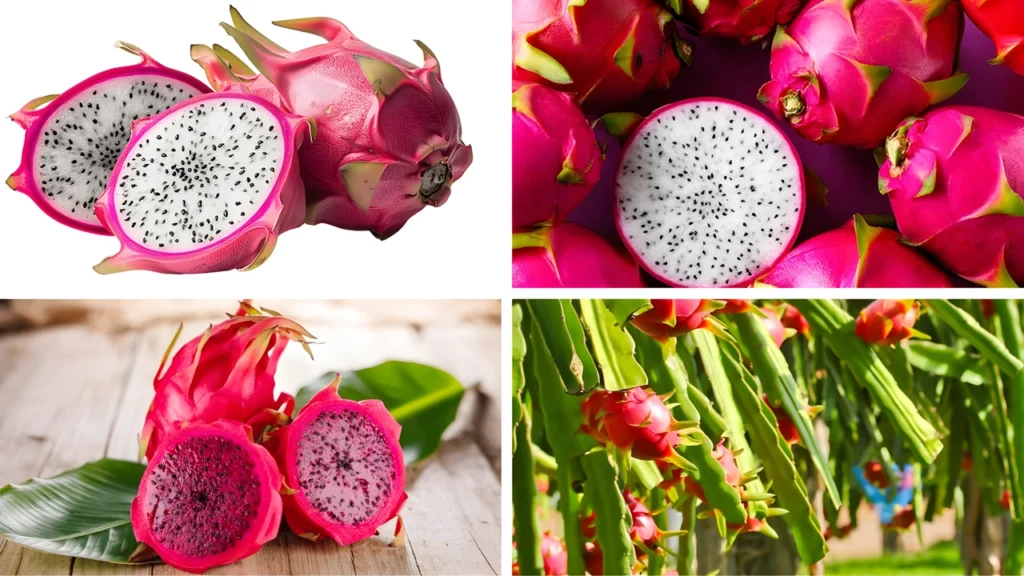Join on WhatsApp
Get the latest updates directly on WhatsApp – motivation, news & more!
Dragon fruit, known for its vibrant pink skin and unique, spiky appearance, has become a popular tropical fruit in global markets. With rising demand across the U.S., Europe, and Asia, one key question stands out: Where does the world’s supply of dragon fruit really come from? In this detailed look at the top dragon fruit exporting countries, we’ll explore the major producers, the reasons behind their dominance in export, and how this exotic fruit reaches supermarkets around the world.

Understanding Dragon Fruit Export and Global Demand
Before diving into the top dragon fruit exporting countries, it’s important to understand why global demand for this fruit is booming. Also called pitaya, dragon fruit is prized for its sweet, mildly tangy flavor, low calorie content, and antioxidant-rich properties. Its bright color and unique appearance also make it highly marketable. Countries with tropical and subtropical climates are uniquely positioned to grow dragon fruit, and many have seized the opportunity to export it to meet rising international demand.
Vietnam: The World’s Leading Dragon Fruit Exporter
When it comes to identifying the top dragon fruit exporting countries, Vietnam stands clearly at the front of the pack. It is the undisputed global leader in dragon fruit production and export. The country has dedicated thousands of hectares to dragon fruit cultivation, especially in provinces like Bình Thuận, Long An, and Tiền Giang.
Vietnam’s dragon fruit industry is supported by favorable growing conditions, established supply chains, and government policies that encourage fruit exports. The country ships dragon fruit primarily to China, but also to the United States, Japan, South Korea, and parts of Europe. Vietnam’s ability to supply consistent quality and volume has solidified its place as the top dragon fruit exporting country worldwide.
Thailand: A Strong Contender Among Top Dragon Fruit Exporting Countries
Thailand is another major player on the list of top dragon fruit exporting countries. Although not as dominant as Vietnam, Thailand has developed a well-organized agricultural sector that includes the large-scale production of dragon fruit. Thai farmers grow both the red- and white-fleshed varieties, and the fruit is often exported to China, Malaysia, and nearby Southeast Asian nations.
Thailand’s proximity to key consumer markets and its efficient export infrastructure make it a significant contributor to the world’s dragon fruit supply. The Thai government has also supported fruit producers by promoting Good Agricultural Practices (GAP), helping to meet strict import standards in developed countries.
China: From Importer to Exporter of Dragon Fruit
Though China is traditionally a major importer of dragon fruit, primarily from Vietnam, it has increasingly become one of the top dragon fruit exporting countries itself. In recent years, China has invested heavily in domestic dragon fruit production, particularly in provinces like Guangxi and Hainan. These regions offer the right climate and soil conditions for successful cultivation.
As Chinese growers expand and improve quality, the country has begun exporting dragon fruit to nearby nations, including Russia and parts of Southeast Asia. While still more of a consumer than a supplier, China’s role in the global dragon fruit market is quickly evolving.
Ecuador: South America’s Leading Dragon Fruit Exporter
Moving to the Western Hemisphere, Ecuador stands out as the most prominent Latin American country among the top dragon fruit exporting countries. Ecuador’s yellow-skinned variety, known for its particularly sweet flavor, is especially popular in international markets.
Ecuador exports dragon fruit primarily to the United States, Europe, and Canada. The country’s proximity to North American markets gives it a geographic advantage, while its ability to grow dragon fruit year-round increases supply reliability. As a result, Ecuador plays a key role in meeting Western demand for this tropical delicacy.
Israel: A Surprising Member of the Top Dragon Fruit Exporting Countries
Though not typically associated with tropical fruits, Israel is quietly becoming one of the top dragon fruit exporting countries due to innovative agricultural practices. Israeli farmers grow dragon fruit in desert-like environments using advanced irrigation systems and greenhouse techniques.
Israel primarily exports to Europe, benefiting from strong trade relationships and short transit times. Its dragon fruit is known for high quality and organic cultivation methods, making it appealing to health-conscious consumers.
Colombia and Nicaragua: Emerging Players in Dragon Fruit Export
As global demand grows, new countries are joining the list of top dragon fruit exporting countries. Colombia and Nicaragua are two such nations investing in dragon fruit farming and infrastructure. These countries offer favorable growing conditions, affordable labor, and an interest in diversifying agricultural exports.
Their exports mainly target the United States, taking advantage of regional trade agreements. While they don’t yet rival Vietnam or Ecuador in volume, these emerging players are carving out their space in the international market and could become major exporters in the near future.
Challenges Faced by Top Dragon Fruit Exporting Countries
Despite the opportunities, the top dragon fruit exporting countries face several challenges. These include:
- Pest and disease management: Dragon fruit is susceptible to fungal infections, which can impact yield.
- Export regulations: Different countries have strict phytosanitary rules that exporters must meet.
- Climate change: Unpredictable weather patterns can disrupt harvests and reduce export volumes.
- Market competition: As more countries enter the dragon fruit market, maintaining quality and competitive pricing is essential.
These challenges require innovation and investment in sustainable farming practices to ensure long-term success for dragon fruit exporters.
What Drives Success Among the Top Dragon Fruit Exporting Countries?
A few common traits help the top dragon fruit exporting countries succeed:
- Climate suitability: Warm, tropical climates allow for year-round cultivation.
- Skilled labor and farming knowledge: Efficient growing and harvesting techniques improve yield and quality.
- Export logistics: Access to ports, trade agreements, and cold-chain infrastructure plays a vital role.
- Government support: Many top exporting countries have policies that encourage agricultural exports and provide training to farmers.
These factors combine to shape which nations can dominate the global dragon fruit market.
Conclusion: Top Dragon Fruit Exporting Countries and the Global Supply Chain
So, where does the world’s supply of dragon fruit really come from? The answer lies primarily in a small group of top dragon fruit exporting countries—with Vietnam leading the way, followed by Thailand, Ecuador, China, and a handful of emerging players like Colombia and Israel. Each country contributes uniquely to the global dragon fruit supply, driven by climate, infrastructure, and market access. As demand continues to rise across the globe, understanding where this exotic fruit originates from helps consumers appreciate the long journey from farm to table. Whether you’re enjoying dragon fruit in New York, London, or Tokyo, chances are it came from one of these top exporters, connecting global tastes with tropical roots.


